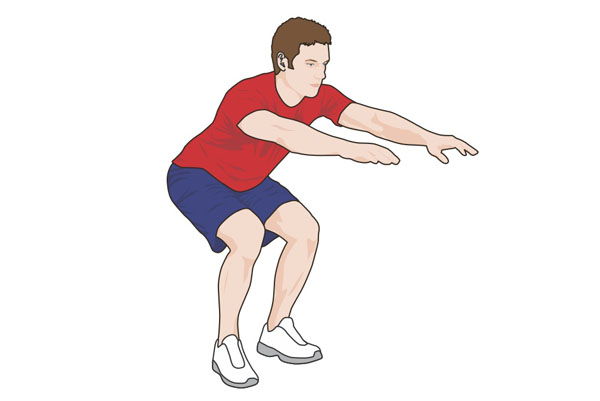With coach to the stars, Alan Milway
Move better to ride faster. So how can we be pain free and reduce injury risk? And how can get more enjoyment from our weekend ride?
Words by Alan Milway
Let’s start by unlocking your movement and improving your flexibility.
Most jobs today are sedentary or require only light movement, which leads to a horde of painful problems — lower back pain, upper back tightness, pain around shoulder blades, rounded shoulders, or a mismatched body where one side is much weaker than the other.
>>> How to not lose fitness when you’re off the bike
Manual workers don’t get away with pain free jobs either, many performing asymmetrical tasks, using one hand much more than the other, and in a twisted, mechanically poor position — brick layers, painters, tree surgeons etc. I’ve worked with all of these trades and many office workers and they all have similar symptoms.
1. Hip flexor stretch
If there is one stretch that will improve your quality of life, it is this one. I do not exaggerate when I say I have had emails thanking me for posting this stretch online and the changes it has made to bad backs. Because the hip flexors insert in the lower back, when we are seated a lot they become tight and weak, essentially pulling on the lower back. To stretch it effectively, get in to a lunge position, elevate the rear foot and drive forward gently pushing the front knee forward and rear glute through. You will feel this in the hip flexor and quad of the rear leg. Hold the stretch for at least 15 seconds, swap legs and do twice each side. If this is too tight, don’t raise the rear leg, but still keep stomach and bum tight throughout.

2. Arm sweep/QL stretch
Sitting either side of your lower spine, above the hips, are your quadratus lumborum — muscles for posture and turning and twisting. These can often get irritated from being sat down, and not twisting in daily life, or from being in a chronically poor position — bent over digging, painting, laying bricks and so on. To stretch them out lie on your side, while keeping both knees pressed down, sweep the top arm around your head in an arc, tracing the fingers along the floor. Find the tight spot and hold it there, then continue to finish the arc and return. Swap sides and repeat. Anything to mobilise, twist and massage the lower back will make a big difference. Perform two arm sweeps each side, and do each side twice.

3. Band pull apart
Hunched over, shoulders pulled forward, staring at your iPhone or computer screen all day? This anterior dominance plays havoc with your shoulders and back, and can manifest itself as soreness in the shoulder blades, rear shoulder, upper back areas. This exercise is so simple but so effective at sorting out this imbalance. It is also a good warm up for any upper body exercise: hold an exercise band in front of you with outstretched arms, arms straight with elbows locked. Pull the band apart, palms facing down, arms stretched outside of shoulder width, but elbows remain locked out and hold tension in the band for 10secs. Keeping tension, raise the arms higher so now at eye level. Keep tension for another 10secs. Now try and raise them even higher to just above head height, without arching your back. Hold for another 10secs. Now lower and hold at each of the previous positions. The total time will be 50secs for five positions of tension and result in a back and shoulders that are woken from their hunched slumber. Palms facing down, pull band apart so it is stretched outside of shoulder width, but elbows remain locked out.
Pro Tip: Don’t let your shoulders rise up as you lift the band up.

4. Hamstring stretch
Unless you are one of the lucky ones who has naturally good mobility here, I expect you will suffer from tight hamstrings as cycling does little to stretch them and keep them elongated — and neither does sitting. Tight hamstrings can affect our ability to bend over properly, and this then has a knock-on effect to a rounded back and potential injuries caused by poor mechanics. There are numerous hamstring stretches, my favourite is lying on your back and raising your leg up to a wall, pushing the knees in towards the wall and toes back towards you. You can hold just enough tension to allow a longer stretch, which is what will help most. Aim for one minute per leg and do each leg twice. Gradually increase tension by sliding your bum closer to wall, but not so much that you are grimacing.

5. Air squats
These give really good insight to your tightness around the hips and back – can you squat down while keeping a neutral back (i.e not curling your back over) and get the line of your hips below the knee joint? Start with arms out in front of you, and progress to fingers placed on the side of your neck, and if you can, now try this with hands overhead and try to keep your hands overhead as you squat down. This is harder and will show tightness in back and lats if there. If you are so tight you can’t squat down even with hands out front, grab a pole or door frame and use this as an ‘anchor’ to lower you down. I call this a ‘pole dancer’s squat’. It’s not sexy but it’s a great place to start.




